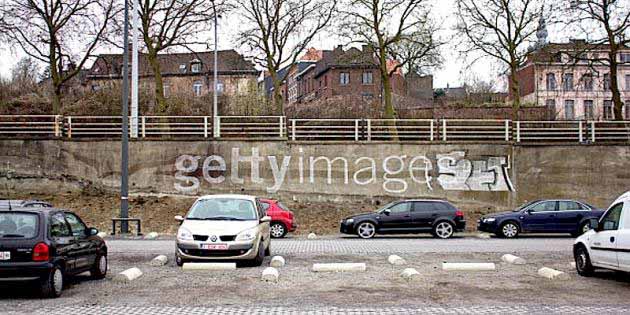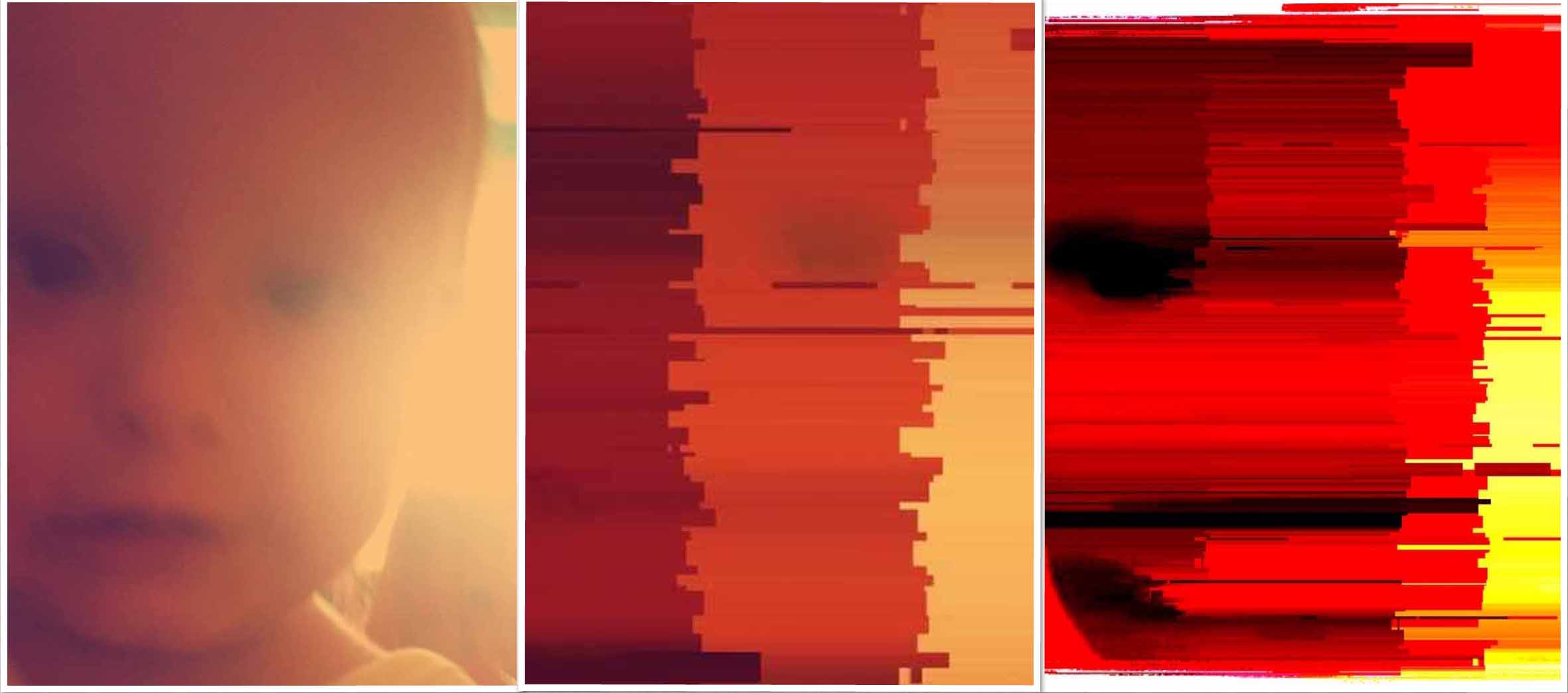Scott Contreras-Koterbay
In 2011, the term “New Aesthetic” was introduced by artist, writer James Bridle. He described the increasing proliferation of visual languages consisting of self-generative computational structures beyond natural language. This was followed by author Bruce Sterling’s 2012 article in Wired discussing New Aesthetics as a set of artifacts amidst heterogeneous networks with social, political, cultural and artistic impact. It has been described as “a vibe, an attitude, a feeling, a sensibility” (1) reflecting the expanding use of digital technology. There is an indication at almost an essentialist level of specific artistic and design practices and an increasing awareness of the inescapabilty of digital objects that are self-substantiating. Based in computational language, algorithms and self-replicating systems of code, New Aesthetic objects both identify and question whether traditional accounts of beauty, pleasure, idealism and expressiveness. If they are reducible to mathematical structures and are simply incompatible with natural language then how should we approach them? For some critics there is nothing new about New Aesthetics at all but this dismissiveness is unjustified. It is clear, for those who have taken up the awareness that is part of New Aesthetics, that something different is occurring. “It posits an aesthetic turn… brought about itself through a ‘new nature’.”(2)
 Mathieu Tremblin: Watermark. 2013. Mons (BE). Landscape, stencil, chalk. 1200 x 200 cm
Mathieu Tremblin: Watermark. 2013. Mons (BE). Landscape, stencil, chalk. 1200 x 200 cm
Benjamin Grosser, an artist and composer working in New Media, writes: “The pixel is the fundamental unit of digital imaging, a square representation of a single color… I’m interested in how the construction of digital images alters our perceptions of reality. Does computer-mediated vision change how we see without computers?”(3) New Aesthetics describes a heightened awareness of how the digitalization of the world, in both the productive and experiential sense that changes how we see the world against our control. Bridle writes: “The New Aesthetic is not a movement, it is not a thing which can be done. It is a series of artefacts of the heterogeneous network, which recognises differences, the gaps in our overlapping but distant realities.”(4)
This is a recognition that there is a growing conflation between the real and the digital, rendering the digital real as well as rejecting the nostalgic and the possibility of an interpretative experience as a mode of receptiveness to these shifting senses of artifactuality. This new artifactuality appears to be independently emerging into the world without human intervention in a manner that Bruce Sterling describes as “an eruption of the digital in the physical”(5) as “a native product of modern network culture.”(6) New Aesthetic objects and experiences are created in the mathematics of the digitalization process rather than through a directed human effort and are radically heterogeneous to our common understanding of the origins of human culture.
For some, the fact that the New Aesthetic is beyond our control is unnerving. Marius Watz posted on his Tumblr feed that: “heavy use of algorithms is bad for you. That is, it is if you wish to consider yourself a computational creative capable of coming up with interesting work… You cannot lay claim to ‘owning’ any given algorithm (or hardware configuration), unless you have added significant extra value to it.”(7) This perspective describes the resulting art forms in the code existing as entities in their own right similar to the traditional objects of artistic production but without human creativity as a guiding force but fully with pervasive effects on the consumer of such entities. After all, code is not neutral but new boundaries create new entanglements whereby we relinquish aesthetic judgments in favor of acceptance.
Others take a more positive perspective in surrendering to the digitalization of the world. An illustrative example of this is the Decim8 app for the Apple iOS. It is rejecting the nostalgia for analog photography — for instance, Instagram — in favor of a destructive process. Decim8 is a product that embraces uncontrolled creative destruction through the randomization of imagery. Its interface specifically encourages the user to relinquish control by prominently displaying a “Random” choice while making access to any navigation of the additional options awkward at best. Developer Kris Collins notes: “FILM IS DEAD … And yet many camera apps still insist upon attempting simulations of that long-past era. We say NO to artificial nostalgia, pushing forward in the digital realm with different forms of creative destruction.”(8) This randomness — which is never truly random since it is dependent on a programmed randomness intended to simulate the random — further means that recollection of the analog itself becomes impossible. New Aesthetic objects quickly and intuitively appear for our perception but even more quickly fade away through the process of consumption.
Bruce Sterling notes: “It was grand work to find and assemble this New Aesthetic wunderkammer, but a heap of eye-catching curiosities don’t constitute a compelling worldview. Look at all of them: Information visualization. Satellite views. Parametric architecture. Surveillance cameras. Digital image processing. Data-mashed video frames. Glitches and corruption artifacts. Voxelated 3D pixels in real-world geometries. Dazzle camou. Augments. Render ghosts. And, last and least, nostalgic retro 8bit graphics from the 1980s…There’s lots, they’re all cool, and most are rather interesting, and some are even profound, but they don’t march together.”(9) There is a sense that New Aesthetics is a design fiction precisely because digital technology is incapable of making aesthetic judgments. It is considered as insincere or, more accurately, incapable of being sincere. There’s also a sense in the objects themselves are self-generative, creating standards of efficiency, that becomes mathematically beautiful. Or, to put it another way, New Aesthetics is a recognition that the beauty of the digital world has escaped our control completely.
 BabiesInstagramDecim8.jpg: Scott Contreras-Koterbay From Instagram images to Decim8 modified images, progression towards digitalization
BabiesInstagramDecim8.jpg: Scott Contreras-Koterbay From Instagram images to Decim8 modified images, progression towards digitalization
In some respects, New Aesthetic objects fit neatly into Kantian aesthetics and aesthetic judgment. A necessarily disinterested perspective is created because the presentation of New Aesthetic objects’ functional and aesthetic natures are, while frequently intertwined, nevertheless necessarily separated and, ultimately, fading. While resisting Kantian intuition of beauty — “For a judgment of taste consists precisely in this, that it calls a thing beautiful only by virtue of that characteristic in which it adapts itself to the way we apprehend it.”(10) New Aesthetic forms present experiences that mimic, at least, natural objects. Kant describes natural objects as having a law-like, teleological determination; there is no opportunity for the free play of imagination and no available freedom for the observer of natural objects. Kant gets weird when he writes:
“For if we want to investigate the organized products of nature by continued observation, we find it completely unavoidable to apply to nature of the concept of intention, so that even for our empirical use of reason this concept is an absolutely necessary maxim.”(11)
Nevertheless, New Aesthetic objects, from a Kantian perspective, can be understood as bound by “a natural purpose if it is both cause and effect of itself although in two different senses. For this involves a concept of a nature without regarding nature as acting from a purpose; and even then, though we can think this causality, we cannot grasp it.”(12) This sets up a further heterogeneity because we know there’s an interior purpose there somewhere, but it remains entirely inaccessible to us. We feel like we should be able to grasp some interiorly justified purpose, some essence, but it constantly slips through our understanding. Thus we can make determinate, teleological judgments about New Aesthetic objects, but it still feels like we’re grasping at nothing.
Aram Bartholl, a German artist exploring the eroding boundaries between the digital and the analog world, stated in an interview: “Pixels seem to be unsatisfied with their binary existence and have decided to jump into the tangible universe (13).” What must an art object be in order to satisfy the conditions demanded by our aesthetic expectations? In many respects, objects which are identifiable as members of the New Aesthetic seemingly deny any satisfaction, existing in a state beyond our standard aesthetic expectations. Should we then ask what does a discussion of the New Aesthetic accomplish? Given the ever increasingly pervasive use of digital technology in studio practice, might it be a means not only of critique but also illumination?
I return back to Sterling’s essay, where he writes: “The New Aesthetic is constructive. Most New Aesthetic icons carry a subtext about getting excited and making something similar. The New Aesthetic doesn’t look, act, or feel postmodern. It’s not deconstructively analytical of a bourgeois order that’s been dead quite a while now. It’s built by and for working creatives.”(14) If artists and critics identify the products which might be labeled instances of New Aesthetics, assessing their creation and use, then this exercise would serve them well in their own digitally based artistic production and understanding of the changing nature of the world.
Scott Contreras-Koterbay received his PhD from the University of St Andrews, Scotland, and teaches aesthetic theory and contemporary art history at East Tennessee State University in both the art and philosophy departments. His primary area of research is aesthetic ontology and his recent work in digital media and New Aesthetics is one of many avenues he’s used while trying to answer the question “what is art?”
References:
1) New Aesthetic, New Anxieties, eds. Berry, van Dartel, Dieter, Kasprzak, Muller, O’Reilly, de Vicente, p. 10
2) New Aesthetic, New Anxieties, p. 4, quoting Bridle
3) Bengrosser.com
4) New-aesthetic.tumblr.com
5) Sterling, Bruce, “An Essay on the New Aesthetic”, Wired.com, April, 2012
6) An essay on the new aesthetic
7) New Aesthetic, New Anxieties, p. 12
8) decim8
9) An essay on the new aesthetic
10) Kant, Critique of Judgment, trans. Pluhar, p. 145
11) CJ, p. 280
12) CJ, p. 249
13) Bartholl
14) An essay on the new aesthetic
Further reading:
Bridle, James: new-aesthetic tumblr
Bridle, James: Book Two blog
Sterling, Bruce, “An Essay on the New Aesthetic”, Wired.com, April 2, 2012
Berry, van Dartel, Dieter, Kasprzak, Muller, O’Reilly, de Vicente (editors), New Aesthetic, New Anxieties
Stories from the new aesthetic
James Bridle Drones slideshow
Vanhemert, Kyle, “This Is What a Computer Sees When It Watches The Matrix”